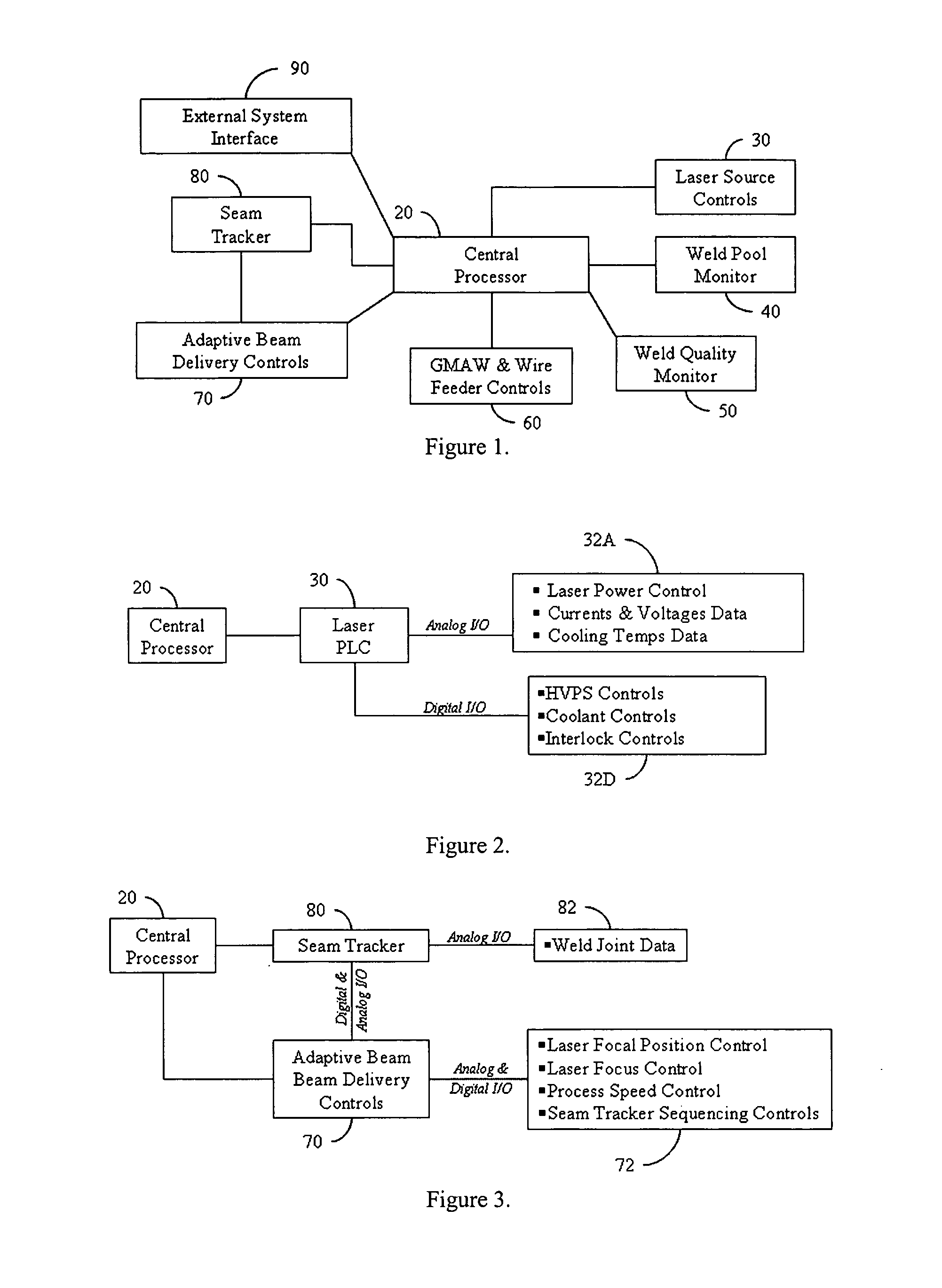Laser welding control system
a control system and laser welding technology, applied in the field of laser welding, can solve the problems of increasing the cost and fabrication time of parts rework, the distortion of parts resulting from welding material can be unacceptably large, and the product weight is higher, so as to increase the reliability of the fabrication process and reduce the amount of rework.
- Summary
- Abstract
- Description
- Claims
- Application Information
AI Technical Summary
Benefits of technology
Problems solved by technology
Method used
Image
Examples
Embodiment Construction
[0027]FIG. 1 is a block diagram of a laser welding control system (LWPCS) 10 according to the invention. The LWPCS 10 is a fully integrated system that comprises a central processor (CP) 20 and a plurality of subsystems. The CP 20 includes a graphical user interface (GUI) 25 and proprietary software that controls and regulates in real-time the various weld-process parameters. Included in this software is a parametric database that contains the various parameters and algorithms with which to control and / or modify the weld process. The subsystems include a laser device control subsystem (LDCS) 30, a vision-based weld pool monitoring and processing subsystem (WPMPS) 40, an active weld quality and monitoring subsystem (AWQMS) 50, a GMAW and wire feeder control subsystem (WFCS) 60, an adaptive beam delivery subsystem (ABDS) 70, and a seam tracking subsystem (STS) 80. Several of the subsystems are independently controlled by programmable logic controllers (PLCs) or by embedded processors....
PUM
| Property | Measurement | Unit |
|---|---|---|
| Angle | aaaaa | aaaaa |
| Size | aaaaa | aaaaa |
| Subsurface | aaaaa | aaaaa |
Abstract
Description
Claims
Application Information
 Login to View More
Login to View More - R&D
- Intellectual Property
- Life Sciences
- Materials
- Tech Scout
- Unparalleled Data Quality
- Higher Quality Content
- 60% Fewer Hallucinations
Browse by: Latest US Patents, China's latest patents, Technical Efficacy Thesaurus, Application Domain, Technology Topic, Popular Technical Reports.
© 2025 PatSnap. All rights reserved.Legal|Privacy policy|Modern Slavery Act Transparency Statement|Sitemap|About US| Contact US: help@patsnap.com



